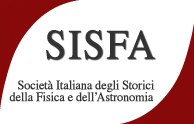Speaker
Description
An increasing number of Paleolithic rock depictions and artifacts is suggesting the presence of an ancient astronomical knowledge but little is known about the reasons behind the development of a complex astronomical thought. By using modern theories of human mind, especially the “Human Birth theory ” proposed by the psychiatrist Massimo Fagioli, we could explore a novel possibility for the birth of astronomy as symbolization of time.
Bibliography
Brague R (2003) The wisdom of the world. Cambridge University Press, Cambridge
Henshilwood Christopher, d'Errico Francesco, Yates Royden, Jacobs Zenobia, Tribolo Chantal, Duller Geoff, Mercier Norbert, Sealy Judith, Valladas Helene, Watts Ian, Wintle Ann (2002)
Emergence of Modern Human Behavior: Middle Stone Age Engravings from South Africa Science (New York, N.Y.)
Massimo Fagioli (2010) Istinto di morte e conoscenza. L’asino d’oro edizioni.
Michael A. Rappenglück (1997) The Pleiades in the "Salle des Taureaux", grotte de Lascaux. Does a rock picture in the cave of Lascaux show the open star cluster of the Pleiades at the Magdalénien era (ca 15.300 BC)?"
Michael A. Rappenglück (2015) Possible Astronomical Depictions in Franco-Cantabrian Paleolithic Rock Art
Michael A. Rappenglück (2015) Possible Calendrical Inscriptions on Paleolithic Artifacts
Stanislaw Iwaniszewski (2015) Concepts of Space, Time, and the Cosmos.

